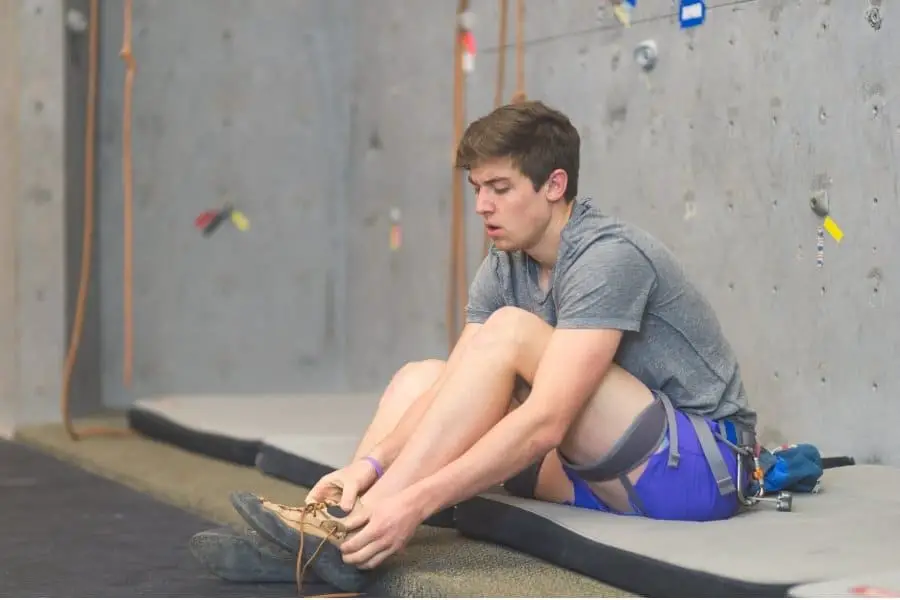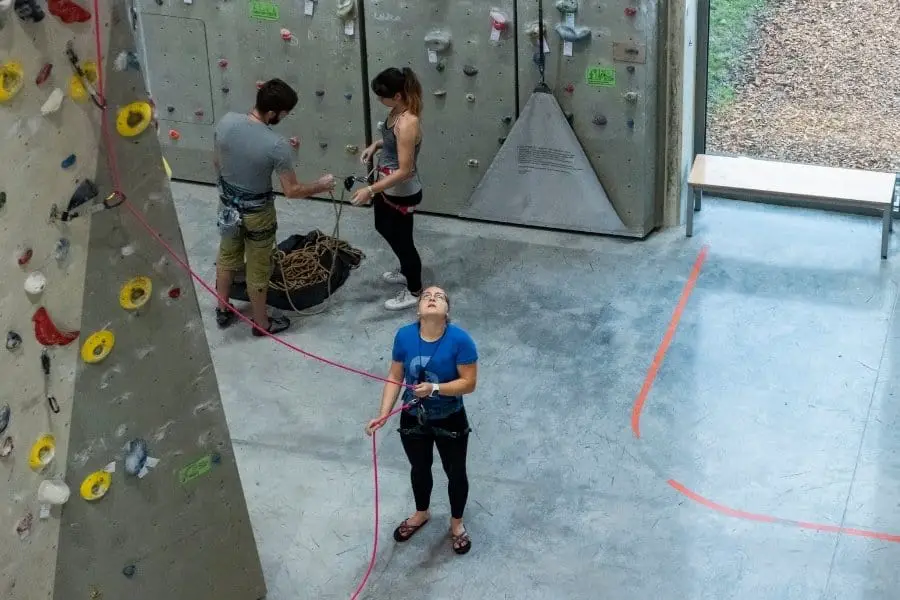Climbing shoes are absolutely fantastic for climbing … but can they be used for anything else? Running shoes are commonly used for walking around in everyday life. Sandals typically end up getting used for both beach days and walking into public showers. But what about climbing shoes? Do they have any extra uses such as doubling as walking shoes?
In general, you should not walk in climbing shoes. Walking in climbing shoes will damage their structure and decrease their effectiveness and lifespan. In addition to this, walking in climbing shoes can be quite painful and hurt your feet.
The reasons why walking in climbing shoes is bad may not seem straightforward at first glance. In addition to this, there are certain times that you should have your climbing shoes on when climbing and when you should not. These reasons why walking in them is bad and the times when you should be wearing them are explained in more detail below.
If you are interested in seeing what the current prices are for the most popular rock climbing shoes, you can find them on Amazon by clicking here. Using the Amazon affiliate link above and/or other links in the article helps support this website.
Why Walking In Climbing Shoes Is Not Good

If you have ever worn climbing shoes then you are likely familiar with their tight fit. Climbing shoes are designed to basically scrunch your foot up and make it as compact as possible. This design and shape causes them to be very impractical to walk in and is actually detrimental to the shoes and your feet.
To find out why climbing shoes are shaped like this and they are worn so tight check out my article here. Wearing climbing shoes too tight however can be very harmful to your feet. To learn more about the dangers of having too tight of climbing shoes, check out my article here.
The three main reasons that walking in climbing shoes is not ideal are discussed further below.
Walking In Climbing Shoes Ruins Their Shape
Climbing shoes are made for climbing and nothing else. As such, they are designed to focus the climber’s weight into a small area, specifically in the toe box of the shoes. This allows climbers to use very small footholds that other shoes such as running shoes would not allow them to.
Walking and standing in climbing shoes makes your feet push out and down on them in a way that they were not designed to handle.
This force causes the rubber soles of the shoe to flatten out and eventually change shape. In addition to this, your feet will be pushing out at the sides of your climbing shoes. This outward force will stretch out the upper material and can even start to pull apart the stitching if significant enough.
These effects take place quicker and are more pronounced in climbing shoes with a more aggressive downturn and softer rubber. Stiffer and more neutral shoes (typically characteristic of beginner and crack climbing shoes) will handle the stress of being stood on a lot better than the more aggressive and soft shoes.
Walking In Climbing Shoes Wears Them Out
Your climbing shoes only have so much life in them before they either need to be repaired or retired. Walking and standing in them while you are not climbing will start to wear out the amount of rubber on their soles and decrease their lifespan. If you are curious to see just how long climbing shoes last on average, check out my article here.
Typically when the rubber on the bottom of your climbing shoes gets worn out you can get them resoled to extend their life. Because their shape will likely be altered as well when you are standing or walking in them, this resole process will not be able to restore them to their former glory.
Climbing shoes are not the cheapest of gear items and you should want to make them last as long as possible. Save yourself some money and only use your shoes for climbing.
Walking In Climbing Shoes Is Painful
If your shoes fit correctly, they should be uncomfortable (not painful) when they are on your feet. This is without standing up or walking in them. Because they are this snug already, it can be painful to walk around in them (especially on hard surfaces that are not forgiving).
Beginner climbing shoes are typically relatively flat and not worn excruciatingly tight. More advanced climbing shoes on the other hand are generally much more downturned and worn a bit tighter. These differences cause walking or standing in advanced climbing shoes to be more painful than in beginner shoes.
This fit difference is why you will see more advanced and elite climbers take off their shoes immediately after they are done climbing the problem/route. Taking your climbing shoes off (especially the tight downturned ones) give your feet a much needed reprieve from their confines.
When To Wear Climbing Shoes
For the most part, you will be able to keep your shoes on the majority of the time you are in a climbing gym. The very soft and padded floors make it pretty bearable to stand around in your shoes without damaging them too much. That said, you will ideally like to minimize this as much as possible.
Climbing outdoors on the hard ground or standing on hard surfaces in them will be a lot more painful and rapidly decrease the shoe’s integrity.
When looking to climb in areas with a hard floor, I recommend having a pair of sandals or other comfortable footwear handy to slip on while belaying/waiting around (as seen in the photo below).

In general, you will only want to wear climbing shoes when you are actively climbing or sitting down waiting to climb. Minimize the amount of time you spend standing or walking in them. Taking a few steps to the problem in your climbing shoes is fine and very common in indoor bouldering gyms.
When in doubt, take your climbing shoes off and let your feet breathe. It will keep your feet from getting too sweaty and extend the life of your climbing shoes. Just be sure you aren’t waving your stinky feet in your climbing partner’s nose!
